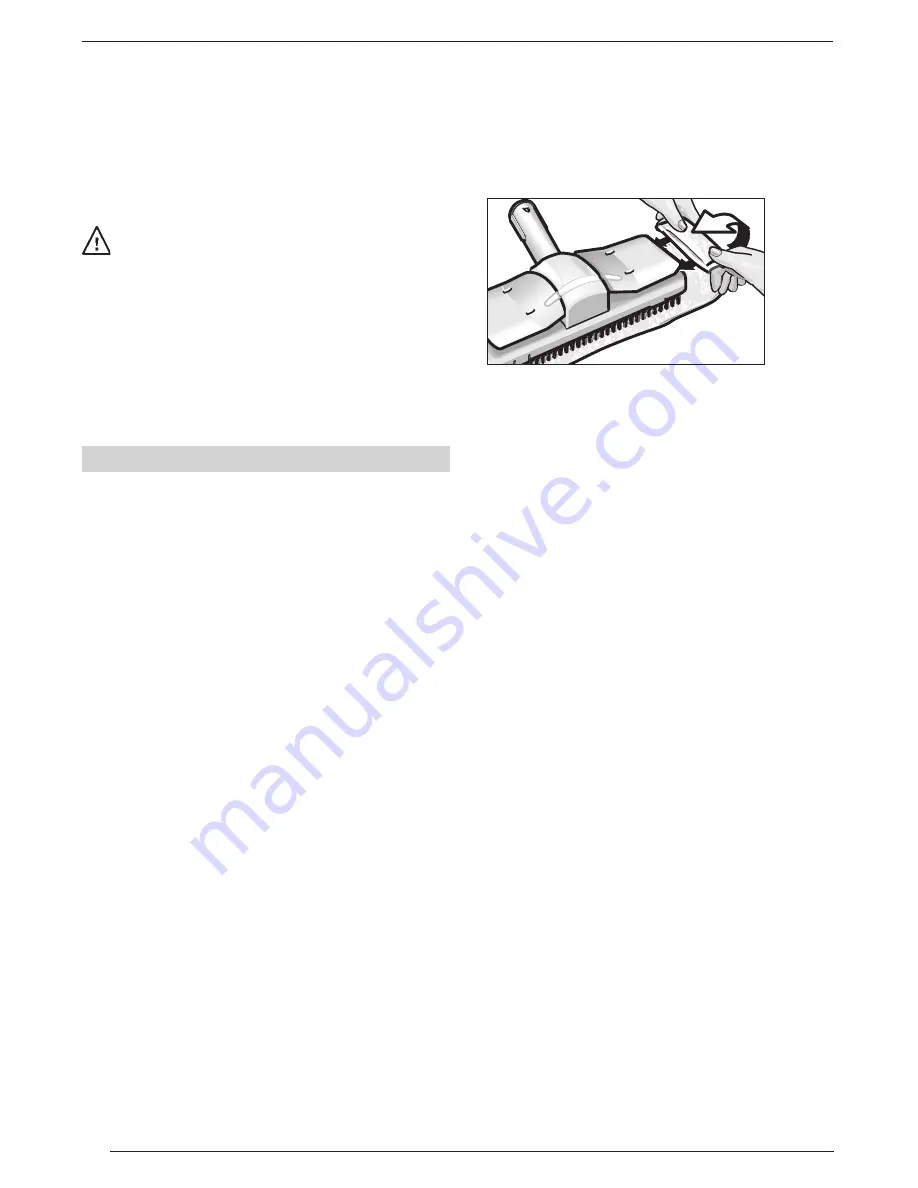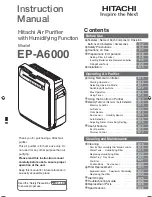
10
4.3 Floor nozzle
Attach the floor cloth (G3) to the floor nozzle (G1).
Fold the cloth lengthways and place the floor nozzle
on top. Pull the ends of the cloth one after the other
under the retaining clips (G2) (see Fig. 3).
To remove the cloth, press down on the retaining
clips (G2) and pull it out.
Fig. 3: Attaching the floor cloth
Turn the floor cloth over or replace it regularly.
This will enable you to wipe up more dirt.
Work on heavily soiled areas at a slower speed
so that the steam has more time to act on the dirt.
If there are traces of detergent or polish on the
surface that you are cleaning (e.g. wax, liquid
polish, etc.), this could result in streaks. As a rule
these streaks disappear after the steam cleaner has
been used several times.
Typical applications:
all washable wall and floor coverings, e.g. stone
floors, tiles and PVC floors.
4.4 Hand nozzle (F1)
Pull the terry-towelling slip-on (F2) over the hand
nozzle (F1).
Typical applications:
smaller, washable areas, such as kitchen sur-
faces made from plastic, tiled walls
windows, mirrors
furniture fabrics
vehicle interiors, windscreens
bath-tubs
4.5 Window nozzle (G1)
Before you clean a glass surface with the window
nozzle for the first time, go over it with the hand
nozzle (F1) and terry-towelling slip-on (F2) to
remove any traces of grease.
Apply steam evenly to the glass surface from a
distance of approx. 20 cm. When you have done
this, push the locking mechanism on the steam gun
If steam is applied for too long, wax, furniture polish,
plastic coating or paint could be lifted off or marks
could be caused. You should therefore clean these
types of surface with a separate cloth to which
steam has been applied or very briefly with a double
layer of cloth attached to the nozzle.
3.3 Cleaning glass surfaces
Do not apply steam jet directly to the sealed
parts of the window round the frame, otherwise
the seal could be damaged.
When the outside temperature is low, especially in
winter, warm the window pane by applying a small
amount of steam across the whole surface of the
glass. This will even out any differences in
temperature and avoid stresses in the glass. This is
important because glass surfaces that are heated
by varying amounts can shatter.
4. How to use the accessories
4.1 Steam gun (C1)
The steam gun can be used without any additional
accessories.
Typical applications:
eliminating odours and creases in clothing:
hang the item of clothing up and apply steam from
a distance of 1020 cm.
removing dust from plants:
maintain a distance of 2040 cm.
dusting objects with a damp cloth:
apply a small amount of steam to a cloth and wipe
over the furniture.
4.2 Spot nozzle (E1)
The closer you hold the nozzle to the object being
cleaned, the easier it is to remove the dirt. Tempera-
ture and pressure are at their greatest immediately
the steam is discharged from the nozzle.
Typical applications:
locations that are difficult to access, such as
corners and joints
taps, drains
wash-basins, WC, shower cabins
blinds, radiators
stainless steel, enamel surfaces
dissolve stains
Apply vinegar to stubborn stains caused by scale
and leave it to soak for approx. 5 min.
Содержание Vaporapid 1201
Страница 2: ...2 Before operating this unit please read this manual thoroughly and retain it for future reference...
Страница 6: ...6...
Страница 16: ......


































